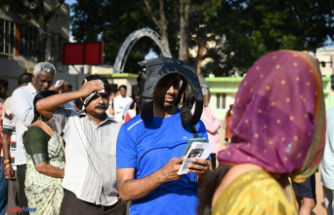AMSTERDAM -- Only lead apron may not protect urologists against workplace hazards like cancer or cataracts.
Spanish investigators believe so. They found that lead-lined surgical gloves had significantly reduced radiation exposure to hands, and that radiation doses to the eyes were lower with the use leaded eye shielding.
Alejandra Bravo Balado, MD from Fundacio Puigvert, Spain's Autonomous University of Barcelona, stated that the use of lead-lined gloves should not be discouraged in the urology profession, particularly among those who devote most of their practice and time to endourological surgeries. This was in an oral abstract at the European Association of Urology Congress.
She pointed out that radiation protection for fluoroscopy operators and staff was not adequately studied by the authors. They concluded that lead-lined gloves and other attenuating materials may actually increase scatter radiation levels.
However, other studies suggest that shielded gloves may be beneficial for clinicians who are close to but not inside the primary beam. This could reduce radiation exposures by up to 58%.
Bravo-Balado, along with colleagues, conducted a prospective study at their center to determine the issue. They compared radiation exposures between a surgeon who used fluoroless protocols and one who used surgical gloves that were lead-lined.
The average radiation dose to the hands for the surgeon who wore lead-lined gloves was 2.87 millisieverts (mSv), compared to 14.87 mSv for the surgeon who wore only latex gloves (P = 0.027).
The average radiation dose for each procedure was 0.02 mSv (P.001)
Additionally, the scatter radiation levels in lead-lined gloves were statistically higher than those in latex gloves.
They also compared radiation exposures among protocol types. The average radiation dose to the extremities for the surgeon who used fluoroless protocols and had switched to standard fluoroscopy protocol using lead-lined gloves dropped to 3.88 mSv from 1.84 mSv. However, this difference was not statistically significant.
Eyes are more vulnerable than the hands to radiation damage. Cataracts can form at doses below 0.01 Gy. This is equivalent to about 100 mSv.
Bravo-Balado pointed out that Euratom (the European Atomic Energy Community) has decreased the annual radiation dose limit to the lens from 150mSv to 20mSv. The exception is 50mSv in one year if exposures are not greater than 100mSv within five years.
They conducted a multicenter study with prospective data to determine radiation doses to the eyes at depths of 0.3 mm to assess radiation exposures from endourologic procedures.
Four European endourologists were selected from the sample and agreed to use an eye monitor during ureteroscopy or retrograde intrarenal surgery.
Two surgeons were wearing leaded protective glasses and one was using a fluoroless protocol.
The average annual doses to the eyes were lower when using fluoroless protocols and leaded glasses.
It is interesting to note that the surgeon with the highest average annual exposure (3.70mSv, compared with 0.16mSv, 1.18mSv, and 1.41mSv), performed the least number of endourologic procedures. This suggests that the cumulative number was not related to exposures.
Bravo-Balado stated, "We recommend that you use ALARA protocols," using the acronym for "as lower as reasonably achievable".
Medscape Medical News was informed by a urologist not involved in the study that radiation exposure doesn't get the attention it merits among urologists.
"In the last few years there has been much debate about this matter," stated Lazaros Tzelves (MD, Sismanogleio General Hospital, Athens, Greece), who moderated the session in which the abstracts were presented.
Tzelves stated that although there are some studies showing that cardiology has higher radiation levels, the effective dose received in urology is greater because the C-arm is closer to the patient. "We are very close to the C arm, so we see more cataracts in urologists with age, and unfortunately some malignancies that are present more often."
He stated that if urologists were polled they would not admit that they used protective glasses or gloves. This is partly due to the fact that clinicians are not often reimbursed for such equipment and because gloves can impair the surgeon’s dexterity.
Internal support was provided for the study. Bravo-Balado and Tzelves did not report any relevant conflicts of interest.
Neil Osterweil is an award-winning journalist in the medical field and a regular contributor to Medscape.
Follow Medscape on Facebook and Twitter.












